Now open!
Closes Sunday, Aug. 24
Embark on an awe-inspiring journey through time to discover the untold story of “Angkor: The Lost Empire of Cambodia.” Over 100 intricate carvings, sacred sculptures and ancient relics – many never before seen outside Cambodia – reveal a story that has baffled scientists for years. How could an empire that built one of the world’s most astonishing architectural and engineering marvels all but vanish into the Southeast Asia jungle? Discover how modern technology is providing new insights into Angkor’s legacy and celebrate its remarkable resilience as a vibrant, living temple and a captivating destination for travelers worldwide.
This exhibition is produced by MuseumsPartner in Austria.
Exhibition Walkthrough
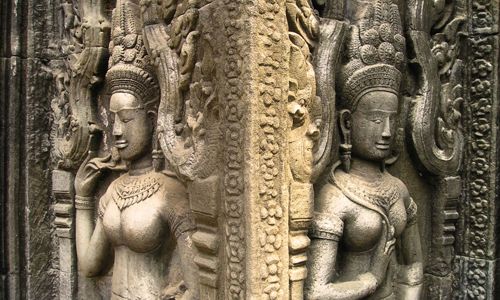
Introduction
The exhibition begins outside the entrance, immersing guests in Angkor’s world, where ancient stones whisper tales of a lasting civilization. A striking replica of Ta Prohm’s strangler fig tree stands nearby, and families can pick up a Family Guide with a summary of the exhibition and a seek-and-find activity for kids.
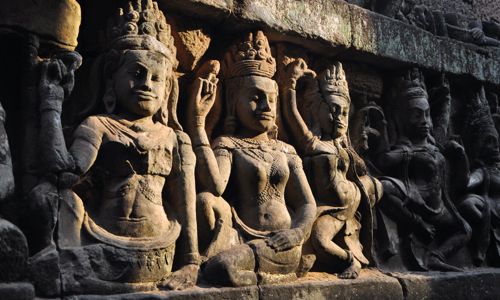
From Legend to Science
Although local people knew about the city and its temples for centuries, European explorers first learned about Angkor in the 1800s, quickly spreading stories about this incredible place worldwide. Hinduism and Buddhism coexisted for centuries at Angkor and here guests are treated to Angkorian art depicting both Hindu and Buddhist figures. Videos and artifacts in this section showcase the story of coexisting religious beliefs in the ancient world and explain Angkor’s archaeological discovery.
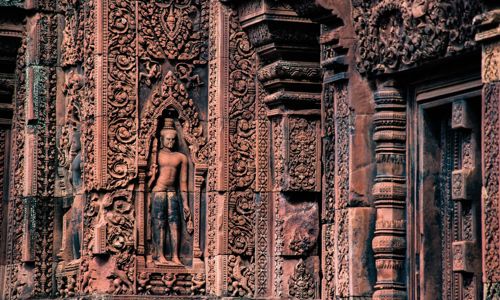
Angkor From Above
Discover how modern technology, such as aerial photography and lidar (Light Detection and Ranging), revolutionized our understanding of Angkor. Lidar mapping techniques uncovered hidden temples and city structures obscured by forests. Guests can explore Angkor’s layout and learn about the divine inspiration behind its iconic temple architecture and urban infrastructure.
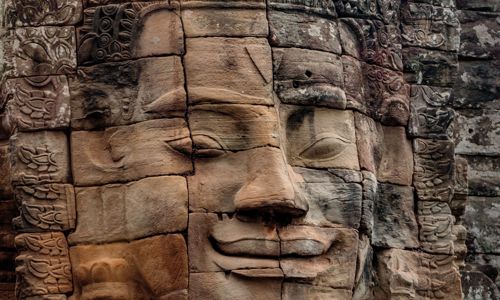
Meet the People
This section provides insights into the daily lives of Angkor’s inhabitants, from artisans to temple workers, through interactive features like the Bayon Wall Scanner. Artifacts, traditional musical instruments and videos bring Khmer society to life. On occasion, volunteers will guide guests in plucking a kse diev, the oldest traditional Khmer musical instrument, for a hands-on experience.
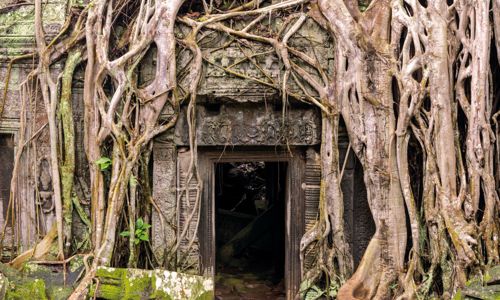
End of Empire
Angkor reached its zenith in the 12th and 13th centuries but eventually declined due to war, environmental changes and social unrest. Despite its fall, the city remained a religious center before being overtaken by the forest. Here, guests will discover carvings, statues and other artifacts that reveal the story of the empire’s decline because of warfare and social, environmental and religious changes in the last centuries of Angkor.
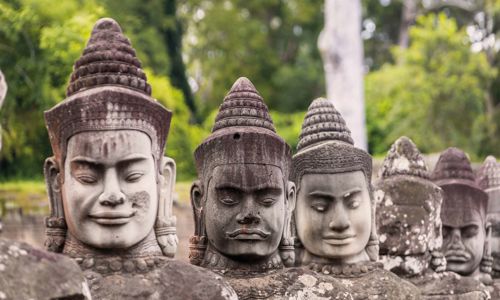
Lost and Found
This section examines Cambodia’s long history of looting from temples and archeological sites, particularly during Cambodia’s civil war and the Khmer Rouge regime in the 1960s and 1970s that devastated the country. Guests follow the arduous journey of international collaboration, scientific detective work and cultural reclamation of Angkor’s stolen treasures. Videos highlight these efforts, and guests will see a sculpture from Prasat Chen, one of the most remarkable artifacts that has been returned to Cambodia.
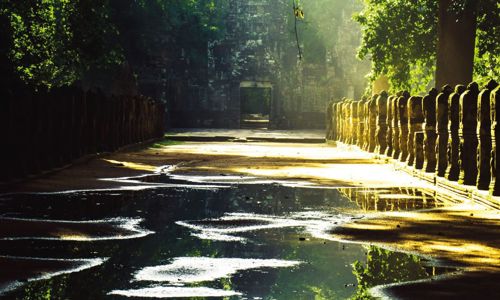
Life Today
Angkor is a tourist destination, a heritage site and a place of worship. The legacy of the Khmer Empire endures in Cambodia’s modern culture, seen in its dances, spiritual practices and studies. Guests learn how Cambodians blend ancient traditions with contemporary life. This section also celebrates the enduring spirit and cultural resilience of a civilization that continues to inspire awe and admiration.
